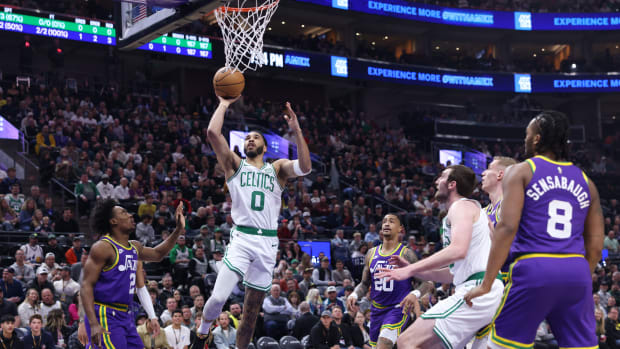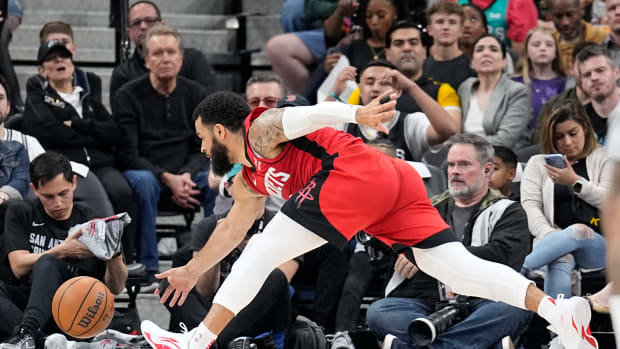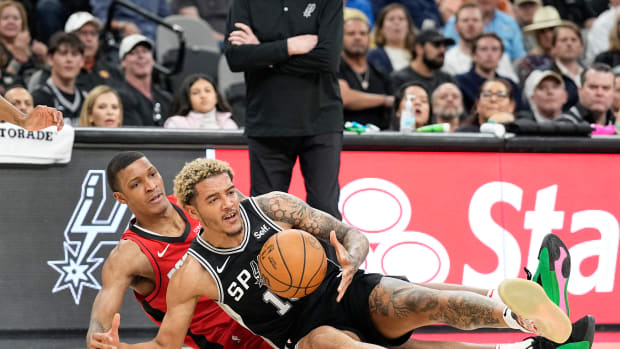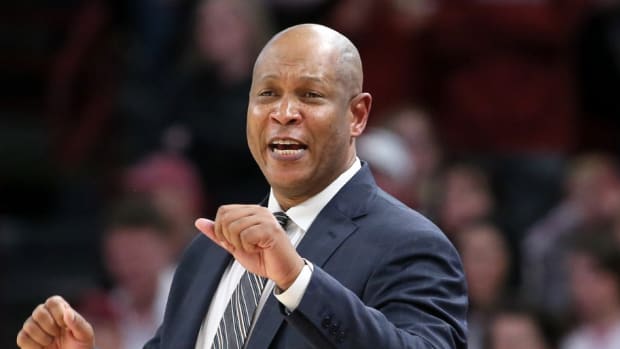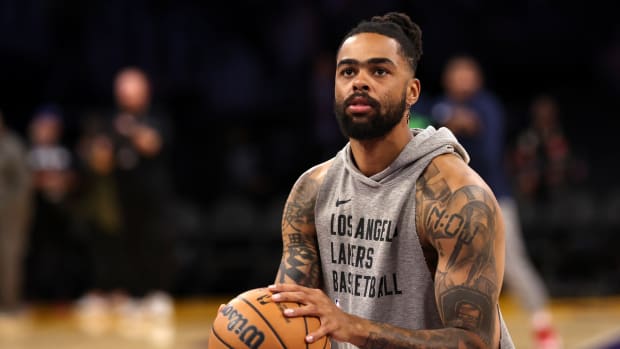Vanessa Bryant's Attorney Demands Answers for Unauthorized Sharing of Crash Scene Photos
Vanessa Bryant’s attorney, Gary Robb, issued a statement over the weekend that indicates the legal aftermath of the Sikorsky S-76 helicopter crash that killed Kobe Bryant, 13-year-old Gianna Bryant and seven others in Calabasas last month could extend into unexpected topics.
Robb, a prominent helicopter crash attorney, demands accountability for an allegation that deputies from the Los Angeles County Sheriff’s Department unethically—and perhaps unlawfully—disseminated gruesome photos from the helicopter crash site. Robb’s statement comes only days after Vanessa Bryant sued Island Express Helicopters, Island Express Holding Corp. and the estate of the pilot, Ara Zobayan, for the wrongful deaths of her husband and daughter.
According to Robb, Vanessa Bryant “personally went” to the office of Los Angeles County Sheriff Alex Villanueva to request, and receive, assurances that the crash area would be designated a no-fly zone and that other measures would be taken to prevent paparazzi and photographers who might seek to take photos and sell them. Bryant stressed the need to “protect the dignity of all the victims and their families.” Her request draws on the reality that there is a commercial market for photographs of celebrities, and, morbidly, their deaths, too. In addition, the First Amendment generally makes it possible to photograph incidents that occur in public spaces.
Despite receiving assurances from the Sherriff’s Department that the crash scene would be secured, Vanessa Bryant has learned that graphic photos, presumably taken by first responders, may have been shared both internally and externally by law enforcement. As reported by The Los Angeles Times, an officer who is described as a deputy visited a bar in Norwalk, Calif, several days after the crash. The deputy allegedly showed fellow patrons crash scene photos that were supposed to be confidential. TMZ reports that the sharer of the photographs was a deputy trainee, who thought he could impress another patron by (apparently) bragging how he was in possession of the photographs. A nearby bartender, according to TMZ, “overheard the conversation” and then filed an online complaint with the Sheriff’s Department.
Robb lambasted the alleged sharing of photos by “some deputies” as “inexcusable and deplorable” and “an unspeakable violation of human decency, respect, and of the privacy rights of the victims and their families.” Robb demands an Internal Affairs investigation be conducted. He hopes the investigation will lead to the offending officers being publicly named and meaningfully disciplined.
It’s possible that the Sheriff’s Department has made this situation worse and, in doing so, defied internal procedures. According to The Los Angeles Times, deputies in possession of the photos were “quietly ordered” to delete them as a measure to keep the controversy “under wraps.” These deputies were allegedly promised that if they “came clean and deleted the photos,” they would not face departmental discipline. If such quid pro quo occurred, it would have likely contravened department procedures. Deletion of photos, particularly if they lack digital copies, could potentially also hinder both the National Transportation Safety Board’s on-going investigation into the crash and the accompanying litigation—namely, the wrongful death lawsuit filed by Vanessa Bryant in Los Angeles County Superior Court.
In a statement, the Sheriff’s Department claims that it will conduct a “thorough investigation” into the allegation. The statement also maintains that Villanueva is “deeply disturbed at the thought deputies could allegedly engage in such an insensitive act." On Monday, Villanueva told media that eight deputies may have shared photos in violation of department policy. He added that only officials from the NTSB or the Los Angeles County Department of the Medical Examiner-Coroner should have taken photos at the crash scene. Any deputies who took photos would have done so without authorization.
Possible legal aftermath
If Bryant and Robb remain dissatisfied by the Sheriff’s Department handling of the photos, it’s possible she could sue the Sheriff’s Department and the offending officers for invasion of privacy, negligent infliction of emotional distress and related claims. Along those lines, note that Robb’s statement refers to a possible “violation” of “privacy rights”—his choice of words was no doubt intentional and serves as a warning that the Sheriff’s Department to conduct a very serious probe into what happened.
California law makes it unlawful to intrude into a person’s private affairs and publicly disclose private facts. Bryant could contend that sharing of victim’ photographs in the aftermath of a law enforcement pledge to uphold the dignity of the victims constitutes an invasion of privacy. The more certain the pledge by the Sheriff’s Department, the stronger the argument for Bryant that the department took on a legal duty that it failed to meet. Such unauthorized sharing could be deemed negligent conduct that caused families of crash victims to suffer anguish, anxiety, horror and related forms of distress.
In bringing a lawsuit, Bryant would likely be motivated by at least two areas of dissatisfaction with law enforcement: (1) the Sheriff’s Department possible failure to honor a pledge to safeguard photographs that potentially display the bodies of the victims; and (2) the possible destruction of evidence relevant to her wrongful death lawsuit and the NTSB’s investigation. Bryant, whose late husband was reportedly worth around $600 million, would likely not be motivated by financial gain in pursuing a lawsuit. Just like with her lawsuit against the company that operated—Bryant contends negligently— the downed Sikorsky S-76, Bryant would seek to hold accountable those wronged her and her loved ones. Any financial remuneration in the form of a settlement or judgment could be donated by Bryant if she so wished.
Suing the police or other government entities is generally more complicated and more difficult than suing a private person. As a starting point, Bryant would need to adhere to the California Tort Claims Act. This law requires a filing against the government entity occur within six months of the injury. This means the filing would need to be filed by July or August, depending on when Bryant learned of the alleged sharing.
The Sherriff’s Department and the officers would also possess potential defenses, one of which is to argue that they are immune from a lawsuit. In California, a public employee, as well as the entity that employs him or her, is generally not liable from injuries stemming from the employee using inherent discretion of their job. The sharing of photos internally, at least among fellow officers, could reflect such discretion. However, the sharing of photos at a bar, particularly if the deputy was off duty, is less likely to gain protection. Further, if the Sherriff’s Department betrayed internal procedures in sharing or deleting the photos, a defense would be harder to establish.
The Sheriff’s Department could also assert that no applicable legal duty or statute has been violated. A general assurance to Vanessa Bryant, the Sheriff’s Department might insist, was not a categorical guarantee that sharing would not occur. In addition, it could prove difficult to establish that the crash scene was “private” in any logical definition of that word. As evidenced by the massive amount of media attention that the crash received, the crash scene was seemingly in the public’s interest. This would make it more difficult to establish invasion of privacy through photographs.
For now, expect Bryant and Robb to stress that the investigation conducted by the Sheriff’s Department into possible photo sharing better be credible and thorough. If Bryant and Robb are displeased by it, the possibility of Bryant filing lawsuit would rise.
Sports Illustrated will monitor the situation and provide updates.
Michael McCann is SI’s Legal Analyst. He is also an attorney and the Director of the Sports and Entertainment Law Institute at the University of New Hampshire Franklin Pierce School of Law.






























